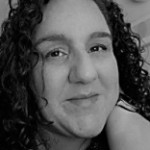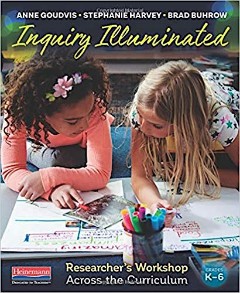A Workshop Model for Science, Social Studies
Inquiry Illuminated: Researcher’s Workshop Across the Curriculum, K-6
By Anne Goudvis, Stephanie Harvey and Brad Buhrow
(Heinemann, 2019 – Learn more)

“There aren’t enough minutes in the day!” How many times have you heard an educator say that one?
With not enough time, the recent focus has been on Language Arts and Math, with science and social studies put on the back burner. It’s a shame because these subjects are often the most engaging to young children and tweens.
Who doesn’t remember a mind-blowing science experiment or a fun historical discovery from their school days? Inquiry Illuminated shows us a way to put these highly engaging topics back into the lives of students.

Getting started with Researcher’s Workshop
I was skeptical of this change in mindset, but this book lays out the framework very clearly. This format relies on a decreased scaffolding model and counts on student questioning to drive the instruction.
When this is first laid out in the classroom, everything is done whole group so routines and practices can be taught to the class simultaneously. As students become more comfortable with the process, guided inquiries can be managed, and then independent ones follow in time.
There are four main steps in this model of Researcher’s Workshop:
- Immerse: After a teacher has decided the main overall topic they’d like to have students investigate, teachers “flood the room” with resources for students to read and view. This is the time that students begin to engage their curiosity about a topic. Questions always follow curiosity, and research ideas begin to form.
- Investigate: Here is where the real research begins. Students can choose to work alone or in a small group and answer those curiosity questions they discovered in the Immersion stage. They watch videos, read books and articles, all the while taking notes merging their old thinking with the new things they have learned.
- Coalesce: (meaning to come together): At this stage students bring all their research together and begin to summarize and synthesize the information that has been gathered. With teacher guidance, they determine the best path along which to do this. It could be a large mind map, a travel brochure, a picture book or anything else they can imagine. The point is to put their research into a cohesive format which will get them ready for the next stage.
- Take Public: As with many writing units, at the end we take that student work public. That doesn’t mean that we need to invite in parents or members of the community (although it could). It often means that students are presenting their newfound information to their peers, acting as the teachers of their own wisdom.
The authors spend a lengthy chapter explaining each stage and what it looks like in each type of Inquiry model (Launching, Guided, Independent). There are large, color photographs with innumerable examples of student work.
Of course, the work in this book relies heavily on Goudvis and Harvey’s earlier work with nonfiction reading and writing strategies. There is a chapter devoted to these lessons – over 20 of them. It will be easy to grasp if you’re someone who is familiar with their philosophies, but the explanations are so clear even a novice will be able to replicate the lesson.
This chapter is a goldmine – I often work with their strategies and there are still things that I made note of and stuck with a Post-It.
Modeling grades 1 through 4
A good portion of this book uses a second grade classroom as its main example. It can be hard to imagine this model in the upper elementary levels (4-6), but Chapter Four dedicates itself to explaining this model moving vertically, in each grade from first to fourth. Inquiries are provided for each grade, continuing to include colorful student examples and sample anchor charts.
A final section includes the story of an intermediate teacher who weaves together literature, poetry, social studies, and history as fifth graders tackle issues involving social justice and historical and cultural perspectives.
This book is a great resource for an educator or district looking to expand their work inside the Workshop model, or even enhance their social studies and science curriculum. When you purchase the book, you get access to 21 supplemental videos that further illustrate the work that goes on in these classrooms. It would be a good investment for teachers and administrators looking to innovate in their schools.
Andrea Doyon will be entering her nineteenth year as an educator, working as a Literacy Specialist with third and fourth grade students. Loving to read and share children’s literature, she is co-founder of the ARC review group #LitReviewCrew. You can find her reviews at her Twitter page @readinthewoods. She resides on the South Shore of Massachusetts with her husband, son and a trio of roost-ruling pets.
































